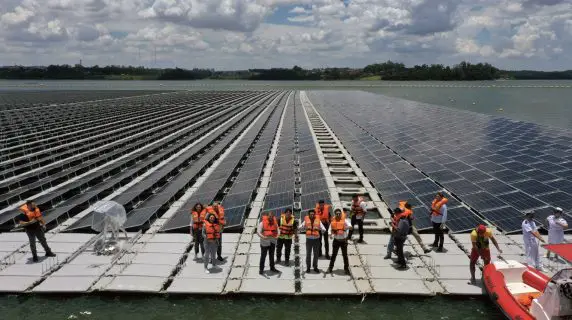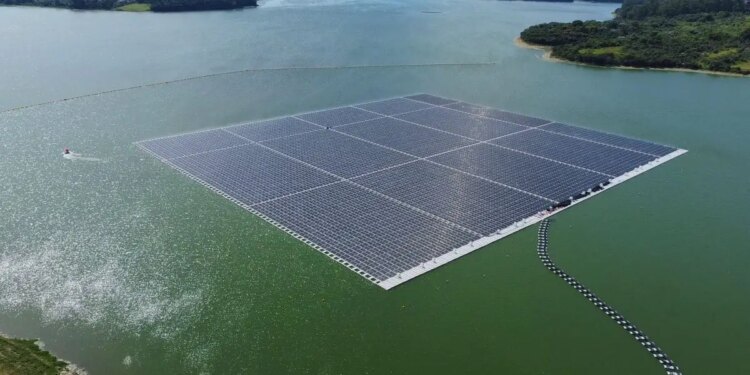A big milestone in sustainable power improvement has reportedly been made within the state of São Paulo. This comes following the inauguration of the primary stage of UFF Araucária, the most important floating PV plant venture in Brazil. The venture is being developed on the Billings reservoir by Empresa Metropolitana de Águas e Energia (EMAE) and KWP Energia.
EMAE is a Brazilian state-owned firm linked to the state authorities of São Paulo. The corporate is in control of controlling the amount of water within the Pinheiros River and producing electrical energy in São Paulo. With its headquarters in São Paulo, KWP Energia however, is an organization that presents progressive options within the improvement and implementation of sustainable tasks particularly for floating and grounded solar energy crops.
The primary stage of the UFF Araucária floating PV plant, the price of which was near US$ 6.1M, was coordinated by Brazil’s Ministry of Atmosphere, Infrastructure and Logistics. It reportedly includes a whole of 10, 500 photovoltaic panels strategically put in on high-density polyethylene floats. This method will guarantee effectivity and sustainable power manufacturing on the facility.
UFF Araucária floating PV plant capability and electrical energy manufacturing
The biggest floating PV plant venture in Brazil has the capability to supply as much as 10 GWh sufficient to energy roughly 4 thousand properties per 12 months.
The ability will function in a Distributed Technology (DG) mode. In different phrases, the UFF Araucária floating PV plant will generate electrical energy at or close to the place will probably be used. This method is according to the trendy developments in sustainable power practices. It promotes power self-sufficiency and reduces reliance on conventional centralized energy era.

Energy era on the UFF Araucária floating PV plant will start as quickly as Companhia Ambiental do Estado de São Paulo (Cetesb) points an working license. Cetesb is a São Paulo state-owned company answerable for the management, inspection, monitoring and licensing of actions that generate air pollution.
The potential of floating photo voltaic power in Brazil
The partial inauguration of the UFF Araucária floating PV plant signifies a significant achievement in Brazil’s renewable power panorama, particularly within the space of floating photo voltaic photovoltaic know-how.
In line with analysis carried out by the Federal University of Rio de Janeiro in 2023, Brazil can generate as much as 79.37 GWh of electrical energy per 12 months, the equal of a possible put in capability of 43.28 GW. That is provided that the nation makes use of simply 1% of every of her 174,526 synthetic water our bodies corresponding to hydroelectric crops and dams, excluding these on indigenous lands.
The northeastern area of Brazil in accordance with the research has the best potential. It could produce 10.58 GW or about 24.5% of the overall floating PV potential within the nation owing to its good photo voltaic irradiance. Moreover, this area additionally has the best variety of synthetic water our bodies within the nation. At quantity two is the southeastern area with a possible capability of 10.08 GW (23.3%) whereas the northern, central and southern areas observe in that order with potential capacities of 8.5 GW (19.7%), 8.2 GW (18.9%), and 5.93 GW (13.7%) respectively.
The outcomes for every state indicated that São Paulo, residence to the most important floating PV plant in Brazil has the third-highest potential 3.87 GW. It follows Minas Gerais and Bahia with a possible for 6GW and 4.59GW respectively.
Additionally Learn
Funding Secured for Brazil’s 900Mw Vista Alegre Solar Plant
Canadian solar to construct 862MW of solar in Brazil
Nordic Solar starts building 53-MW solar farm in Spain



